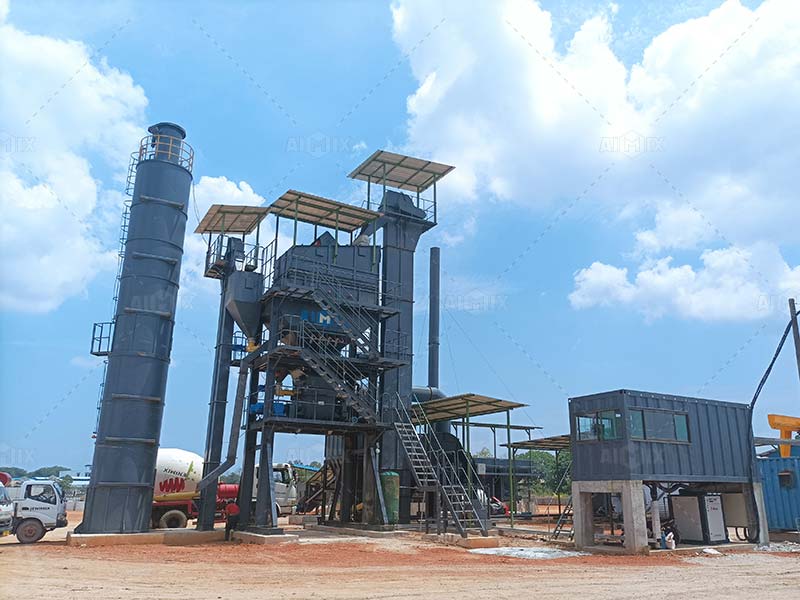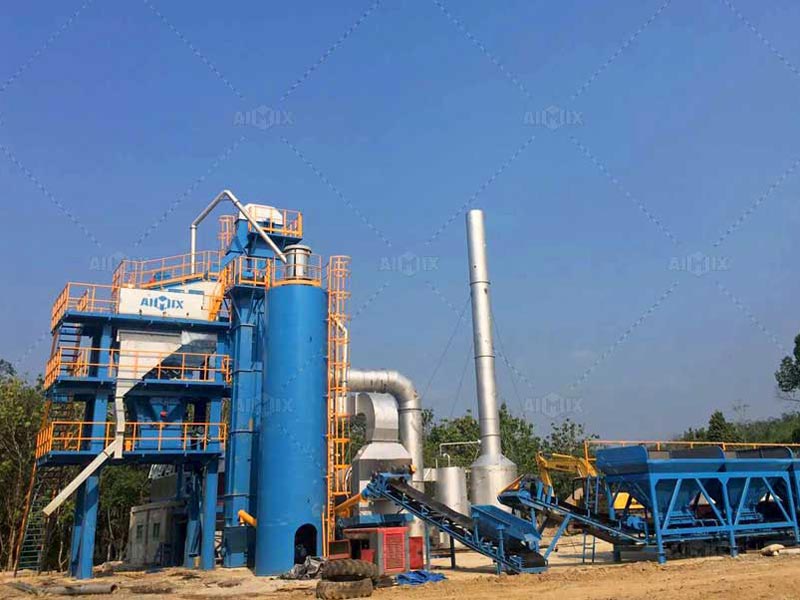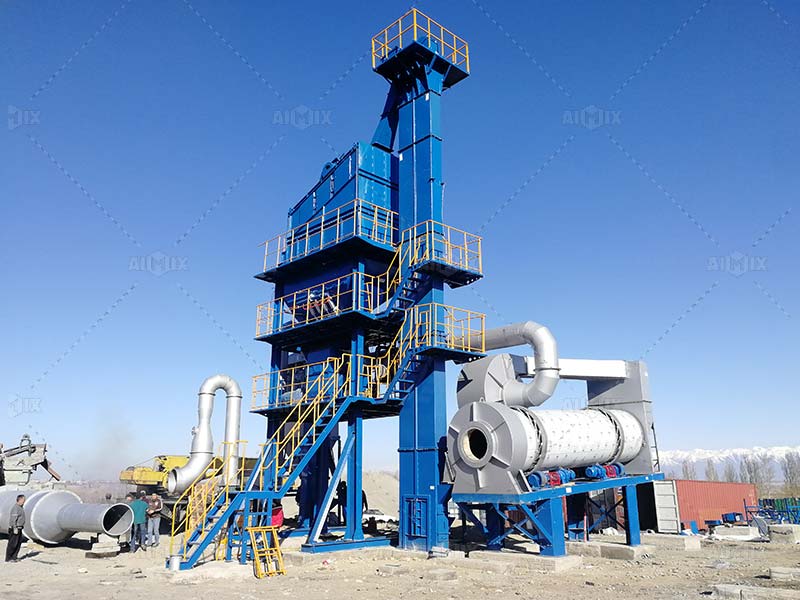Often referred to simply as the asphalt hot mix plant, the primary role of an asphalt batch mix plant is to produce HMA, an abbreviation for hot mix asphalt (now you see where the name comes from). Asphalt is a crucial component for road construction and related surfaces. But have you ever wondered about its origins and how it’s created?
The Components:
Before diving into the intricate process, let’s take a moment to understand the key components of a hot mix plant:

- Cold Feed Bins: These bins are where the raw aggregates are initially stored. Each bin comes with a feed gate to regulate the flow of aggregates.
- Primary Vibrating Screen: This screen plays a critical role in separating the aggregates into different sizes.
- Charging Conveyor: It conveys the aggregates to the drying drums, where the magic begins.
- Drying Drums Plus Burner: The drying drums are equipped with burners to facilitate the drying process of aggregates.
- Bucket Elevator: It transports the dried aggregates to the tower unit.
- Pre-separator with Bag Filter: These components are crucial for trapping heavy dust particles.
- Vibrating Screens: More screens are employed at the top of the tower to further separate the aggregates.
- Hot Bins: These bins are used for temporary storage of the hot mix.
- Mixing Unit: This is where aggregates, filler components, and bitumen are mixed.
- Bitumen Tanks: Bitumen, a vital ingredient, is heated and stored in these tanks.
- Weighing Bins: Both filler components and bitumen are accurately weighed here before being added to the mixer.
- Storage Silo: The final asphalt mix is either transported immediately or stored temporarily in a silo.
- Control Panel: The heart of the operation, where an operator oversees and controls the various processes.

The Process:
Now, let’s delve into how this complex system works. Raw aggregates are first deposited into feeder bins, each equipped with a feed gate for precise control. These aggregates then move into drying drums, where burners aid in the drying process. From there, the aggregates are transported to the tower unit via a bucket elevator.
At the tower’s pinnacle, screening occurs, separating the aggregates into different bins based on their sizes. The aggregates are then weighed and deposited into a mixing unit along with filler components and bitumen. Bitumen, stored in heated tanks, is pumped to a weighing station before being added to the mixer.
Mixing takes place for a prescribed duration, resulting in the creation of hot mix asphalt. This final product can either be transported immediately or stored temporarily in silos, which are designed to retain the mix’s heat. You also can check working process on this web page: https://aimixasphaltplant.com/. Or check this video:
Environmental Considerations:
Hot mix plants are engineered to be as environmentally friendly as possible. Bag filter and pre-separator units are employed to trap dust and pollutants. The bag filter, with closely spaced bags within a closed chamber, effectively filters the air, reducing emissions and pollutants.
Control Panel and Expertise:
All these intricate operations are meticulously controlled by an operator using the control panel. While many asphalt plant operation processes are automated, human intervention may still be necessary on occasion. The control panel’s layout is designed for easy interpretation, but only qualified personnel can effectively operate it due to its advanced nature.

In conclusion, the asphalt hot mix plant is a complex, yet crucial, piece of machinery in the construction industry. Understanding the asphalt batch plant components and operations sheds light on the intricate process of creating the asphalt essential for building our roads and infrastructure.
